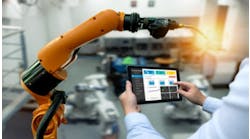What additive manufacturing really needs: Innovative accountants
When we speak with large companies, most of them easily grasp the benefits of additive manufacturing.
You can make the unmakeable. You can easily customize a product and offer small lot sizes or limited editions. You can produce parts onshore and on demand, reducing inventory and logistics costs. And you can iterate (over and over again) your prototype, reducing the cost and increasing the speed of new-product development.
The excitement is palpable. But then we have to address the costs. And that excitement wanes.
Additive—versus traditional injection molding—is becoming more cost competitive. This helps us make our case.
When big manufacturers make things with injection molding they have one person responsible for the cost of the mold (because it’s a capital expenditure) and another person responsible for the cost of the part (which is an operating expense). The latter is being judged on his or her ability to make those operating expenses shrink.
And on the measure of operating expense alone, additive manufacturing is not the winner; making a part one-by-one on a 3D printer is always going to cost more than injecting molten material into a mold.
But when looking at the costs holistically—the cost of the mold plus any anticipated changes to the mold plus the part cost—additive manufacturing can win.
Here are some questions we encourage prospective customers to consider:
If you don’t have to ship parts or products from overseas—because you’re additively manufacturing domestically—how does that reduce your costs?
Can you charge more now that you’ve reduced lead time from months to days?
How does your financial position improve when you lower the holding cost of inventory and eliminate warehousing and obsolete inventory?
What is the actual probability that you’ll need to update/change that mold and, thus, double the capital expenditure?
We call this the “total value of additive manufacturing.” What we’ve found is that smaller and mid-sized companies, which often make choices on a cash basis, like what they see, while big companies, which often make decisions based on quarterly income statements, simply can’t stomach the increase in operating expenses, even when their capital expenses and warehousing expenses fall and their customer service improves.
Reshoring manufacturing and rebuilding America’s industrial base is going to take more than innovative engineers. It’s going to require innovative chief financial officers, program managers and accountants—professionals willing to slice the numbers differently and take a holistic approach to this transformation.
Innovative accountants will be able to nudge their colleagues toward 3D printing with data, proven business scenarios and hard financial gains that can’t be disputed.
By John Nanry, Fast Radius co-founder, chief fulfillment officer and general manager


